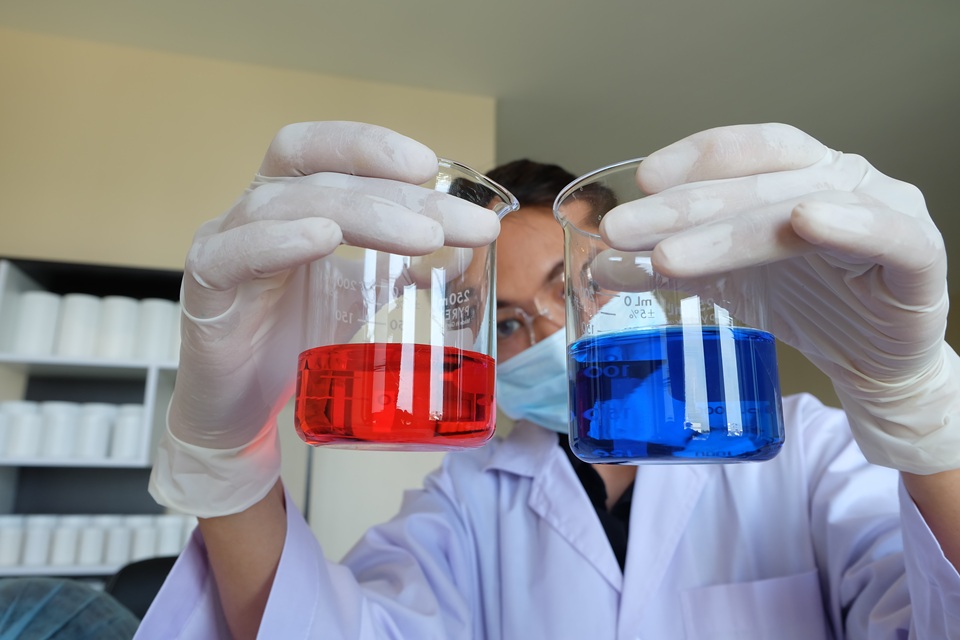Key Takeaways:
- Understand key techniques used in chemical mixing.
- Explore the impact of precision and safety in the process.
- Discover best practices from industry experts.
The Importance Of Chemical Mixing
In an interconnected world where industries like pharmaceuticals, cosmetics, food and beverage production, and manufacturing converge, chemical mixing emerges as a pivotal process. It’s not merely about mixing substances but about tapping into the science of molecular interaction to create products that perform consistently and effectively. The impact of precise chemical mixing can’t be overstated, given that the final product’s success often depends on the right balance and interaction of ingredients. Imagine the taste of your favorite snack if the seasoning wasn’t evenly distributed. Employing an industrial mixer for chemicals becomes indispensable; these mixers are engineered to handle the complexities and scale of industrial demands, ensuring product integrity and consistency are maintained.
Standard Techniques In Chemical Mixing
The techniques used in chemical mixing are as varied as the industries that rely on them. Agitation, blending, and hybrid methods each serve specific purposes and are chosen based on the chemical properties involved and the desired outcome. Agitation, for example, utilizes motion to disperse particles uniformly, effective for solutions where speed is a priority. Blending, however, combines ingredients that must maintain individual properties throughout the process. Advanced equipment like static mixers achieves homogeneity by carefully controlling flow, while dynamic mixers introduce elements such as rotation and fluid injection to facilitate the mixing process. Each technique contributes to an overarching goal: a perfect, even distribution of materials.
Precision & Safety: A Balancing Act
Precision is the cornerstone of successful chemical mixing, dictating the efficiency and quality of the output. Yet, with high precision comes the imperative for stringent safety measures. Chemical processes often involve volatile compounds that, if mishandled, can pose risks to workers and the environment. An awareness of potential hazards is crucial in this field, with best practices comprising comprehensive training programs for operators, the use of personal protective equipment, and strict adherence to operational protocols. By implementing these measures, industries can prevent accidents, avoid costly downtime, and safeguard employees and the environment.
Innovations In Mixing Technologies
The face of chemical mixing is continually reshaped by technological innovations, with breakthroughs that make the process more accurate, efficient, and safe. Modern industrial mixers have digital controls, allowing real-time monitoring and adjustments. These technologies detect inconsistencies and automatically tweak conditions, ensuring the blend remains within specified parameters. Digital twin technology further enables virtual simulations of mixing processes, allowing engineers to predict performance and adjust strategies before physical production begins. With these tools, industries can enhance productivity while reducing waste, showcasing a commitment to sustainability and responsibility.
Challenges In Chemical Mixing
Despite these advancements, the challenges within chemical mixing persist. Variability in the raw materials can lead to unexpected outcomes, necessitating careful management and control. Fluctuating parameters, such as temperature and pressure, can lead to deviations from desired results, making consistency a formidable challenge. Moreover, as industries scale operations, the complexities multiply; processes optimized for laboratory scales might falter when translated to full-scale production. Experienced professionals are essential, capable of navigating these challenges through a meticulous understanding of the materials and technologies at hand, thus ensuring processes operate smoothly despite the hurdles.
Best Practices From Industry Leaders
Industry leaders have long understood that success in chemical mixing hinges on adopting best practices that evolve with technological progress and industry standards. Continuous staff training emerges as a fundamental practice, keeping teams up-to-date with the latest safety regulations and technological innovations. Additionally, regular equipment maintenance and calibration ensure that mixing machinery operates at peak efficiency, reducing the likelihood of downtime or accidents. Staying connected within the industry through conferences and seminars can also provide valuable insights and foster a culture of continuous improvement, helping companies remain at the forefront of the field.
The Future Of Chemical Mixing
Looking ahead, the future of chemical mixing is bright with promise. Integrating artificial intelligence and machine learning represents a transformative opportunity for further advancements. These technologies empower systems to learn from each production cycle, optimizing processes continuously and autonomously. Furthermore, as sustainability becomes an increasing global imperative, industries are exploring greener mixing methods, focusing on reducing energy consumption and minimizing chemical waste. The path forward is one where chemical mixing aligns closely with global initiatives for sustainable development, heralding an era of innovation where efficiency, safety, and environmental responsibility coexist harmoniously.






Leave a Reply